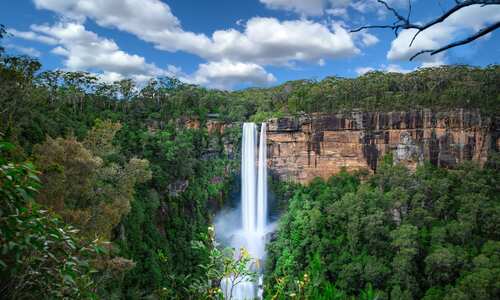Introduction
This small island state is Australia's most decentralised and geographically diverse – a 90-minute drive can take you from ancient rainforest valleys, highlands and lakes to long white-sand beaches. The stunning wilderness has been recognised beyond Australia's borders, with 20 per cent of the island recognised as World Heritage Area.
Urban charm
A fabulous waterfront area and fine Georgian buildings are among the standout features of Tasmania’s picturesque capital, Hobart, which lines the banks of the Derwent River and is home to half the state’s population. Launceston, too, is a delight to explore with its vibrant cafes, museums, delightful Victorian buildings and swathes of parkland. And, on the west coast, the cheery little fishing town of Strahan on Macquarie Harbour makes a great base from which to explore the nearby beaches and rainforest.
Spectacular wilderness
The 161,000 hectares that form Cradle Mountain-Lake St Clair National Park comprise a dizzyingly beautiful landscape of glaciers, lakes, moorland and jagged mountains. It's a pristine home to all manner of wonderful wildlife, from kangaroos to Tasmanian devils, as well as wildflowers in spring and whole network of walking trails that take in the best views. Meanwhile, on the coast, the perfect curve of Wineglass Bay and the pinky-orange peaks of the Hazard Mountains set the scene for the outstanding luxury of Saffre Freycinet lodge.
World-class food & wine
With a whole host of local brewers, wine makers and food producers and artisans, Tasmania has developed a well-deserved reputation among foodies worldwide. The state's cool-climate wines, particularly chardonnays and pinot noirs, are regularly rated among Australia's best, while the chance to shuck fresh oysters off the coast at Freycinet National Park or tuck into a succulent rib-eye steak at Launceston's renowned Black Cow Bistro will satisfy even the most ardent epicurean.
A convict past
As the notorious penal colony of Van Diemen’s Land, this island, located across the Bass Strait from mainland Australia, became synonymous with remoteness and hardship. And it's still possible to chart the island's convict past today, with sites such as that at Port Arthur laying bare the hardships suffered by convicts in the 19th century. In 1830, this site on Tasmania’s southeast coast was a place to imprison convicts who had committed further crimes on the island. Its natural features and rumours of shark-infested waters made escape impossible.
















